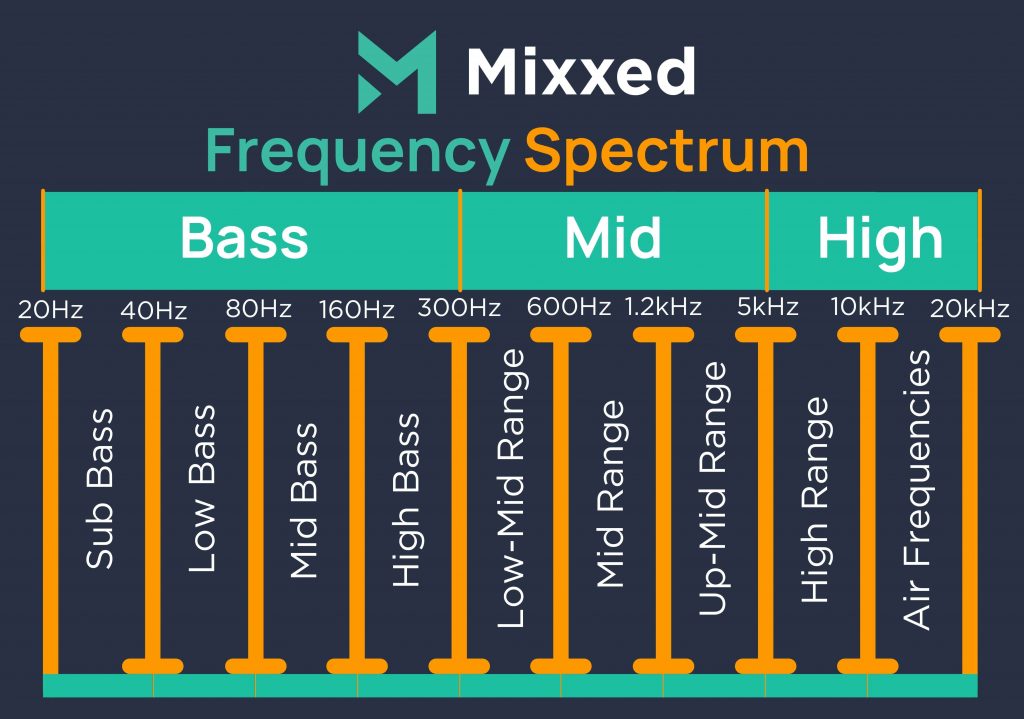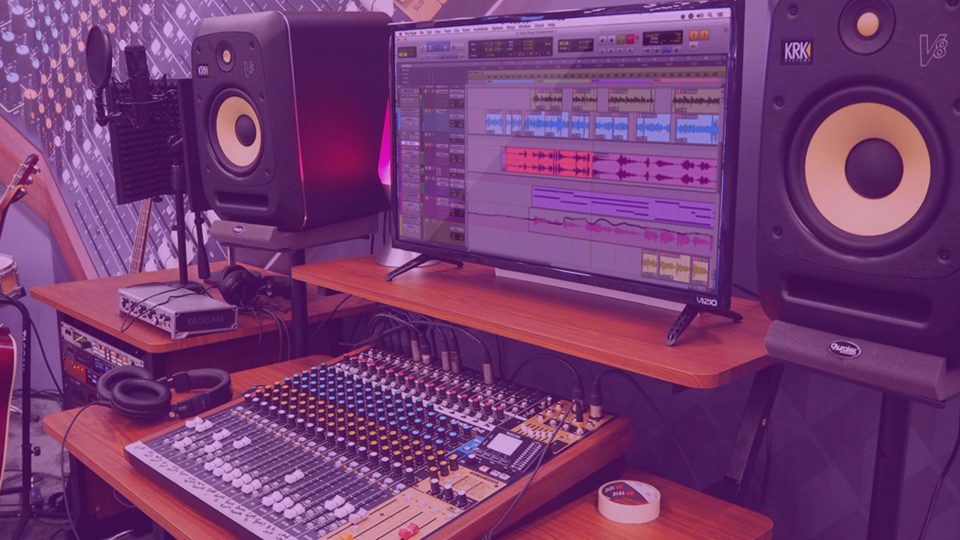How to Use Expanders, Exciters, and Enhancers
If we’re talking technical terms, expanders and exciters are enhancers themselves. This is because they each accentuate a particular part of a signal.
These three types of processors work on three different areas of a signal, and those are frequency, stereo width, and loudness.
What Does an Exciter Do?
An exciter adds saturation to the higher frequencies of your signal from 3k and up. This effect creates more overtones and therefore adds richness and sparkle to your sound. It excites the harmonics of your signal.
Pro audio company Aphex discovered the effect by accident. They found that playing a track at the same time as playing a thinner, distorted copy of itself added more clarity and brightness to the sound. This led them to release the “Aural Exciter“. The Aural Exciter enhances clarity by using phase shift and adding harmonic overtones.
You may hear people refer to audio exciters as psychoacoustic processing. It creates the illusion of richness by applying a copy of the signal that has been thinned out and distorted. It adds perceived harmonics end enhancement without affecting the dynamics or level of the signal. This allows us to boost a specific frequency range without clipping our signal.
Exciters create the illusion of richness by applying a copy of the signal that has been thinned out and distorted.
You don’t actually need an exciter-style plugin to emulate the effect either. By simply sending your signal to an aux track with a high pass filter cutting off frequencies below 3K and inserting a distortion after it, you can create thee excites effect yourself.
Units that came out after the Aural Exciter began bringing more functionality too. ‘Big Bottom’ is a control that allows us to enhance low end and subharmonics as well as the upper frequencies. Companies like SPL and Waves have recreated this process on multiple plugins.

How to Use an Exciter
When using an exciter effect, it’s better best to use it on individual stems rather than a whole mix. This is because it can reduce the depth of your sound if you overuse it. Like using an EQ to boost frequencies, exciters can be great tools to bring a sound forward in the mix. Vocals can always benefit from a light touch of excitement!
What Does an Enhancer Do?
Up next, we have a processor that adds stereo width. It enhances stereo width.
Your stereo field is made up of a left and right channel. These are two individual channels where one is responsible for the signal leaving your left speaker and the other your right speaker. Your stereo image is the sum of these two channels working together. Anything found in the center between your left and right channel (drums, bass, and vocals) will appear equally as present in both your left and right channels. You can think of your central elements as a mono signal as both speakers are playing the exact same signal.
But anything sitting between your left and right channels that aren’t in your center image is the “difference” signals that make up your stereo field. Panning instruments left and right is now standard procedure in contemporary music. This is because you don’t actually have a stereo field until you pan anything left and right. If you didn’t pan anything your mix would be very cluttered and is a mono signal because both speakers are playing the exact same signal.
Stereo enhancers work by increasing the ratio of your left to the right information. That means they increase the width of your signal while keeping all instruments as far from one another as you panned them. The distance between them does increase, but that’s because the whole stereo image is getting wider.
Stereo enhancers work by increasing the ratio of your left to the right information. That means they increase the width of your signal while keeping all instruments as far from one another as you panned them.
Think of increasing stereo width like blowing up a balloon. When you blow one up it stretches. It doesn’t create new matter to fill gaps that are appearing as you blow into it – the surface area of the balloon increases but the balloon itself will be just as small as it was if you were to pop it.
Stereo enhancers often manipulate the phase of a signal and make it perceivable as wider. As cool an effect this is, it can lead to issues with mono playback. When using a stereo enhancer plugin, it’s a great idea to check if your audio will play back in mono without anything disappearing or sounding different.
Again, you don’t actually need an enhancer plugin to emulate the effect. All you have to do is duplicate your signal, have the two copies on separate tracks, and pan one hard left and done hard right.
How to Use an Enhancer
Spatial enhancement is fantastic if you need a sound to stand out in your mix more. Again, vocals and or lead instruments will always enjoy a little stereo enhancement. But be careful to not overdo it. Spatial effects can reduce clarity and actually reduce the impact of the signal if it’s not used reasonably.
What Do Expanders Do?
A compressor compresses the dynamic range of a signal. We’re here to tell you that an expander is the polar opposite of a compressor. An expander expands the dynamic range of a signal.
There are actually two types of expanders, and those are “upward expanders” and “downward expanders”.
Upward expanders amplify the level of your signal when it passes the threshold. Downward expander does the opposite and attenuates it. The vast majority of expanders are upward expanders but you can find downward expanders out there too.
Upward expanders amplify the level of your signal when it passes the threshold. Downward expander does the opposite and attenuates it.
Like on a compressor, a threshold dictates the threshold that your signal must breach before the plugin can kick in. Knee, attack time, and release time for expanders all work the same as compressors too.
What does act a tad differently is the ratio control.
On a compressor, a ratio of 2:1 will attenuate your signal by 2dB for every 1dB it breaches the threshold.
On an expander, a ratio of 1:2 amplifies your signal by 2 dB for every 1dB it crosses the threshold. Did somebody say it’s the opposite day?
For a bit more clarity, let’s use another example. If you set the ratio on your upward compressor to 1:5, you set your threshold to 0 dB, and you play your signal at 1dB in level (which is then 1dB above your threshold), your signal will be amplified to 5dB. If your signal is playing at 2 dB then your signal gets amplified to 10 dB.
Makeup gain is almost always necessary with upward expansion. As your signal becomes louder, parts become louder after leaving the expander, the signal is vulnerable to distortion if you don’t have the right gain staging in place. Make use of your makeup gain and attenuate your signal after it leaves your expander. Just because you’re turning the gain of your signal doesn’t mean the dynamic expansion your signal just underwent is undone.
These three tools can be the cherry on the cake of your audio signal. You’ll find a multitude of sounds you can enhance, expand, or excite in the Mixxed sample library.
The sampling revolution has risen in popularity and shaped music since the early 1970s. Sample culture continues to transform how millions of artists and producers do their thing in DAWs.
You too can break conventional norms, challenge the status quo, and open Pandora’s box of sound design.
Mixxed works with a growing number of sample labels and contributors to provide you with an affordable sample subscription service that’s more accessible than any before.
You’ll have access to our growing catalogue of loops, one-shots and sound effects that you can browse, download and keep forever for less than $3 a month.
Sign up today to find your sound!
